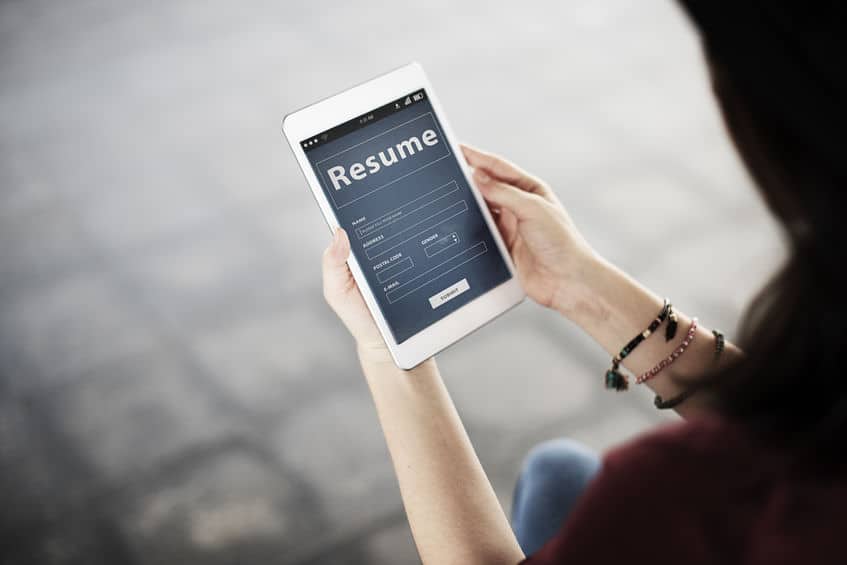It has become very common for people to have jobs that are done remotely. The question is: how do you quit one properly? It is not professional to just walk away and completely ghost your role. It is advised that you take proper precautions and care in leaving. In this, you ensure that you will at least have a place to come back to if ever needed.
How do you quit your job when you work remotely? You would quit your remote job in the same professional manner as you would in a traditional office job. This means giving appropriate notice, having clear communication, and appropriately providing a good transition plan to minimize impacts to your employer.
How to Quit Your Job When You Work Remotely

Common sense dictates that quitting a remote job should be very similar to leaving any other job where you’re on location. However, there are nuances to the business relationship when you work away from your coworkers. For that reason, you will need the following great tips to help you smoothly transition away from this job.
1. Make Your Plan Solid
You want to make sure that you plan everything out correctly. This means you have another job to transition into so that you do not experience any income discomforts or at least any that aren’t needed.
Plan out the time frame! Try to give at least two weeks, if not more, notice to the appropriate channel. Make sure that your time does not overwhelm yourself and place an extra strain on everyone. This can make the biggest difference in the world especially with the number of things that need to be done before your departure.
Take a look at where you sit on the ladder in your company. If you are an entry-level role, make sure to give the standard two weeks’ notice as a courtesy. If you are in a management role, you should probably look towards three to four weeks’ notice. For anything higher, it is recommended to be four weeks and more. Remember, the higher up you are, it will take longer to find someone with your qualifications, and then training will take longer as well.
2. Communication
If you know you are about to leave and you have your plan laid out, then you need to figure out how to communicate your departure to your company. Do not go straight to your team members and tell them you are leaving first. Things can turn nasty as the message travels through the grapevine.
Make sure you follow the chain of command. Try and meet with your manager or human resource representative. This may mean a video conference meeting. Keep your emotions out of it. If there are any issues, you can address it with the human resources representative during the exit interview.
If you have been having issues in the workplace, here is some guidance in that area. Set aside any ego or possible attitude that you may have. It is easy to get wound up in emotions and show it during your interactions. However, this may complicate things a bit more than what is needed. Do what you have to in order to approach the conversation with a neutral attitude.
Listen to what others are saying. Many times, we just want to respond without really listening. We are right, and everyone else is wrong. However, if you take the time to evaluate the situation, chances are you will make the best decision.
Cultural differences can also make things difficult in communications. Try to maintain your neutrality, listen mindfully, and leave any extreme beliefs at the door.
Lastly, lack of interest and motivation can cause poor communication. In any case, many times we can get overwhelmed and lose our mojo. That is normal, however, we have to use caution when we notice that this is going on.
Any of these in any combination can be dangerous. We have to practice responsibility and accountability for what is going on so that we can make the best decisions, especially if you want to leave on the best terms.
3. Make It Professional
Write a professional resignation letter and email it your manager after the resignation meeting. This way, you can formally address that you are leaving and they can start working with your HR department. Here is a list of things that should be included in your resignation letter:
- State that you will be leaving
- Include your role
- Date of last day
- Thank them for hiring you
- Offer to train replacement
- Well wishes
- Maybe some great things you’ve seen or gone through
- Your contact information
Always ensure that there is nothing negative in your resignation letter. No matter the real reason why you may be leaving.
See sample Resignation Letter outline below:
Date:
Name:
Phone Number:
Email:
Dear Mr/Ms/Mrs (Recipients name),
Please accept this letter as my formal resignation notice as (position) at (business name), effective (date).
After careful consideration, I have decided that (reason for leaving – keep it positive).
Thank you for the opportunities provided and the achievements that have been accomplished together. I wish you all much success in the time to come.
I would like to aid in the transition of my departure by helping in any recruiting and training for my replacement. I would also like to update and organize things to help my replacement adjust better to this position. If there is anything else that I can do, please do not hesitate to let me know.
Sincerely,
Signature
Typed Name
4. Schedule a Resignation Meeting
Make sure to schedule a resignation meeting immediately. This should be done around the beginning of your notice period. Do not schedule the meeting on the last day of work. Have your resignation letter ready. It is always best to have a formal discussion before giving your written resignation.
Be sure to express gratitude no matter the situation. Point out the things you’ve learned, the culture you have experienced, and achievements you may have obtained. Your reason for leaving is at your own discretion. It is up to you how much, if any, information you want to give your manager. If you do not want to share any information, you may keep it vague but professional.
Outline and make a plan with your manager of what needs to be done and the time frame that you are working with. This gives them the ability to map out as well what needs to be done on their end.
Point out ways that may help the manager such as updating the job description or bring them up to date on processes that may have been changed. Identify all of your major tasks and projects that you are currently working on, providing adequate status reports so that everyone knows where everything is and any recommendations on skill sets needed to complete the tasks or projects.
Listen to any tips, views, or feedback that your boss may give you during this meeting. They may want to share feedback on your work or aspects that may have been missed that may be helpful in your next job.
In the case that your boss or manager may become angry at the fact that you are leaving, stay calm. Remember the stresses that come along with being a boss, that they may be reacting to their own emotions. If you have any inclination that the meeting may turn south, invite an HR representative to join you in the meeting.
During this time, also ask your boss and manager how they wish the news to be delivered to the team. You may offer to deliver that news for them.
5. Organize
The next step to focus on is reviewing your files and making sure they are organized appropriately. Whoever comes in after you is going to need to be able to access them easily. There are many tools you can use to keep your information together like Google Drive, One Drive, Dropbox, etc. It will make it a lot easier for the person to already know what type of information is needed for the job without them having to re-invent the wheel.
If you have access to emails, passwords, or any other sensitive information, be sure to communicate with the manager and the individual who will be taking your place. These are not to be left out for any other individual to gain as there may be important information contained within.
6. Train Your Replacement

A positive way to leave a position is to get involved in the hiring and training of your replacement. This helps the manager identify the right skill sets needed for the job and reduce the ramp up time of the replacement resource. Ultimately this makes it a much smoother transition to ensure the workload of the department is not impacted and the company can still manage with the change.
Here are a few ways to train your replacement to the fullest:
- Communication – Make sure that your replacement is comfortable with the remote communication tools available. This includes chat, video conferencing, email, electronic signatures, etc.
- Create and provide a reference guide – this can be duties, forms, or any other source that your replacement may need upon taking over the role.
- Go at their pace – you may have been at this a while and can process things a bit quicker than they can, so have some patience. You want it done right, not rushed.
- Start with the basics – always start the training with the core job functions.
- Your replacement is human – they will not be able to remember everything off the top of their head. They will ask questions and you need to be patient and prepared to answer with clarity.
- Do it and show them exactly how it is done – more people learn better with hands on training than a lecture.
- Remember you are still a professional and are still working there – do not take yourself out of that mode.
- Keep opinions quiet – do not voice your opinions or things you may have heard along the way.
- Make them comfortable – introduce them to everyone, give them a tour of the office, and a simple rundown of what goes on in the workplace.
When training someone remotely, make sure that you are aware of their time zone. That way you can come up with the most effective plan to get the training done prior to your departure.
7. Handover Notes
Handover notes are any notes or references taken down that help with the performance of the day to day tasks without any major hiccups. This offers a type of lifeline when no one else knows how to do a certain part of your job. These notes can also be used in case the new replacement does not work out.
Make sure your notes are as detailed as possible and answer any questions that may arise. It will help the manager and team reduce the learning curve. Your notes should include the following:
- Role and responsibility summary
- Pending tasks
- Major deadlines
- Critical Task performance description
- Location of documents and resources
- Important people and their roles
- Stakeholder contact information
- List of meetings
- Workflows
- Template and resource list
- Tips and tricks
- Upcoming projects and events
- Draft Training Program
- Attachments – such as policies, manuals, operating procedures, and any other important documents
8. Do Not Burn Bridges
No matter what the reason is that you are leaving your position, be sure that you keep yourself calm. Leave gracefully, it will benefit you more in the end. You never know if a situation falls through and you may need to come back.
You have already invested the time and work, so they will know who you are and remember the extra work that you put in before you left. This also helps in the case you need their help in getting future positions.
Whatever you do, stay true to yourself. There are some cases where you cannot help but burn that bridge. If that happens, ultimately things will be ok at the end.
9. Network
While you are preparing for your departure, make sure you network with your soon to be ex-coworkers prior to your last day. One useful tool is Linkedin. This allows you to quickly connect and keep track of your coworkers contact information for future interactions. You may be able to use them as references at a later date.
If any of your teammates or others you worked with did an incredible job, ask them if they would be ok with a recommendation letter. For example, write them a recommendation via Linkedin or other social tools. Many people appreciate this type of gesture and usually this can help you build long term relationships.
10. Get That Recommendation Letter
When connecting with your manager to announce your departure, make sure to request that reference or recommendation letter. It may come in handy later in your career. The best recommendation letters come from people that know your job skills the best.
11. Do Not Forget to Update Your Resume

If you do not have a job lined up already when you submit your notice, be sure to update your resume. If there is an available (with permission) sample of your work, then be sure to add that as well. Update your social networks with all the skills you have gained from your job. Also, make note about your abilities to effectively work in a remote setting.
12. Exit Interview
This is normally an interview to find out your level of satisfaction or dissatisfaction with the role, the job, and any other areas of your employment. Do not take this time to throw negative stuff. Your time is almost up.
However, any tips, tricks, or insight may help the company better perform for their future employees. Stay calm, give positivity, and gratitude. During this time, you may need to return any property that belongs to the company if you are in the same city. Otherwise, you probably would need to ship it back to them based on instructions from your HR. Also make sure that passwords, passcodes, and any of that sort information is handled properly.
